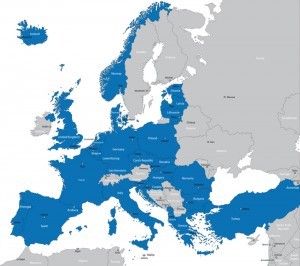

 Insurers in Western Europe have generally stayed the course with their investment mixes in recent years, even as they’ve been hammered by record-low interest rates, Standard & Poor’s Global Ratings found in a new report.
Insurers in Western Europe have generally stayed the course with their investment mixes in recent years, even as they’ve been hammered by record-low interest rates, Standard & Poor’s Global Ratings found in a new report.
Carriers there offer an interesting case study regarding their response to low interest rates, which have adversely affected insurers around the world.
It’s not that Western European insurers aren’t looking to change their investment mix. Standard & Poor’s found that record-low, and even negative, interest rates are putting pressure on insurers’ capital adequacy and earnings potential. But they are exploring rather than making a dramatic switch right now.
“On average, strategic asset allocations have remained broadly stable over the past five years,” S&P said in its report.
Why is this? Standard & Poor’s points out that insurers are weighing a number of factors beyond just returns.
“They also weigh the risks, and they aim at matching the profile – the duration, guarantees, and liquidity – of their liabilities, the insurance policies and products they sell,” S&P said. In addition, the report points out that insurers must follow regulatory requirements. In Europe, that means Solvency II trumps a quick investment change, as it “requires that insurers back up investments into riskier asset classes with more capital.”
“What’s in flux [instead] are product features such as the duration of liabilities, guarantees, liquidity, and the extent of risk transfer to policy holders,” S&P Global Ratings analyst Lotfi Elbarhdadi and report author said in prepared remarks.
Additionally, S&P said it expects insurers to reduce management and acquisition costs by incorporating tighter network specialization and digitalization.
Interest rate declines have certainly had their impact, but Western European insurers have generally remained resilient. Standard & Poor’s said that even as declining average bond ratings has increased credit risk in recent years, it expects the insurers it rates to keep strong credit quality in their bond portfolios over the next few years.
S&P added that its ratings on most of these insurers is based on the assumption that capital adequacy will keep pace with growth in asset risks by way of adequate earnings retention. The ratings agency added it also assumes that “insurers will most likely favor capital-light product strategies rather than take on excessive asset risk.”
Standard & Poor’s based its report on a sample of about 40 insurance groups it rates in Western Europe. The sample included property/casualty, life, composite and global multiline insurers, as well as global reinsurers. Countries included in the study: U.K., France, the Netherlands, Germany, the Nordic countries, Belgium, Spain and Italy.
Source: Standard & Poor’s